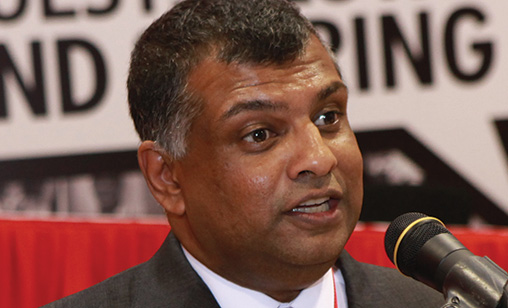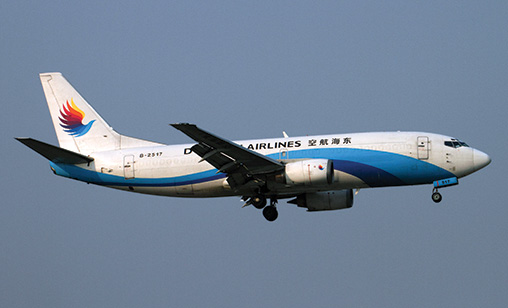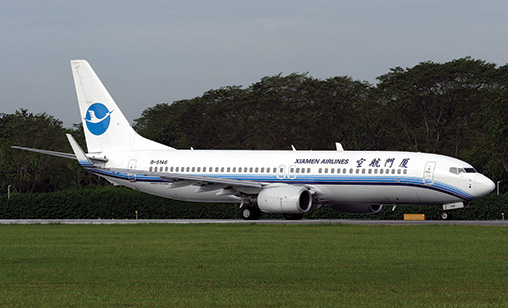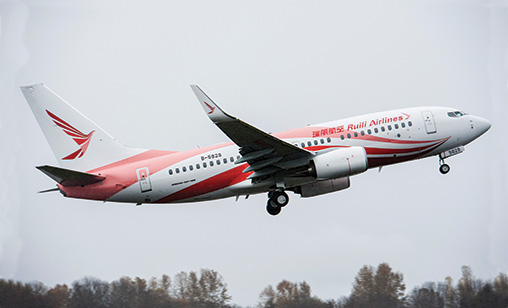Farnborough Air Show
Asian airlines keep tills ringing at Farnborough
Asian airlines carried the week at the recent Farnborough Air Show where they signed multi-billion dollar orders for mostly single aisle jets. It confirmed the region as the world’s largest future air passenger market.
September 1st 2016
The big aircraft manufacturers may have sold around $62 billion worth of jets at the Farnborough air show in July, but the sales figures were a long, long way from the record $204 billion signed at the previous UK show in 2014. Read More »
The 2014 book may have been inflated by the massive orders of the Middle East airlines, but the big shift downwards this year definitely defined the times as the Asia-Pacific’s continuing moment.
 |
More than half of this year’s Farnborough deals, estimated at $34.35 billion, were written with Asia-Pacific airlines.
And as analysts forecast lower global sales will continue, mainly because most major carriers have large orders scheduled for delivery into the next decade, the evidence continues to highlight that aviation’s centre of gravity is moving east.
Airbus chief operating officer, customers, John Leahy, said in the manufacturer’s most recent forecast: “while established European and North American markets continue to grow, the Asia-Pacific is the engine powering growth in the next 20 years.
“China will soon be the world’s biggest aviation market and together with emerging economies, further population concentration and wealth creation, strong air traffic growth will be fueled. We are ramping up production to meet market demand for our leading aircraft products. We will also ramp up our customer service offerings to meet the increasing demands of air transportation.”
At Farnborough 2016, Airbus won the battle for orders, but not by much. It secured 279 orders and commitments worth $35 billion, at list prices, from airlines. Boeing won orders and commitments for 182 aircraft at $26.8 billion.
But the real story was in the detail. No major orders from big full service carriers were signed, with the exception of a $2.85 billion purchase of eight A350-1000s by Virgin Atlantic. The new order essentially replaced an earlier agreement for A380s.
| 'More than half of this year’s Farnborough deals, estimated at $34.35 billion, were written with Asia-Pacific airlines' |
The largest order was for 100 A321neo from AirAsia, valued at $112.6 billion, followed by part Qantas-owned Jetstar Pacific’s commitment to A320s worth $980 million. All the other orders were from Chinese airlines and went to Boeing.
Donghai Airlines ordered five B787-9 Dreamliners ($4.07 billion) and Kunming Airlines signed up for 10 B737MAX worth $900 million. Ruili Airlines converted its Memorandum of Understanding to a firm order for six B787-9s at list prices of $1.68 billion, Xiamen Airlines agreed to buy 30 B737MAX for $3.39 billion and an unidentified Chinese customer will take 30 B737 MAX and NGs for $3 billion.
Airbus and Boeing remain extremely bullish about their sales. With a record backlog of 13,500 aircraft between them, they have sufficient orders to keep their production lines humming for a decade at current output rates.
Nevertheless, some analysts have cautioned that economic risks, ranging from slowing growth in China to Britain’s decision to leave the European Union could cause orders to start to dry up or be cancelled, particularly for larger twin-aisle jets.
Both major manufacturers have raised their forecasts for airliner demand in the next two decades. Boeing estimates airlines will need 39,620 new aircraft worth $5.9 trillion in the next twenty years, an increase of 4.1% over its 2015 forecast.
| 'Airbus and Boeing said demand for single-aisle jets, rather than twin-aisled aircraft or four-engine extra-large aircraft, are the drivers of their revised upward forecasts' |
“Despite recent events that have impacted the global financial markets, the aviation sector will continue to see long-term growth, with the commercial fleet doubling in size,” said Randy Tinseth, vice president marketing at Boeing Commercial Airplanes. Boeing forecasts airline passenger traffic will increase 4.8% a year in the same period.
Airbus has raised its 20-year forecast to 30,070 new aircraft, up 500 from its previous estimate, and predicts passenger traffic will increase at an average of 4.5% a year. “Middle classes in emerging markets will double to 3.5 billion people by 2035,” it said, predicting particularly strong growth in China and India.
Airbus and Boeing said demand for single-aisle jets, rather than twin-aisled aircraft or four-engine extra large aircraft, is the driver of the revised forecasts. Of the 279 orders Airbus signed at Farnborough, 269 were for its A320 family.
Boeing did not mention China specifically in its forecast. It expected the Asia-Pacific to order 15,130 new airplanes worth $2.35 billion to 2035, with single-aisles attracting 11,160 orders, or 74% of all orders.
Boeing believes air traffic will increase at an annual average 6% per year and that by 2035 the region will account for 48.7% of the worldwide airliner demand. China is expected to contribute an increase of 6.2% per year, Boeing said.
Airbus sees growth being driven mainly by China and India and said the Asia-Pacific will order 13,458 new aircraft, valued at $2.25 trillion, and that 9,074 of the new aircraft will be single-aisle jets.
Post his Farnbough Air Show order, AirAsia Group chief executive, Tony Fernandes, said his airlines fly close to 1,000 flights every day to more than 120 destinations in 24 countries. “We recorded a robust load factor of 85% in the first quarter of 2016, up eight percentage points from the same period last year,” he said.
 |
 |
 |
“We are confident of maintaining this momentum. The A321neo will help us to meet ongoing strong demand as well as reduce our cost per Available Seat Kilometre across the group. It will translate to lower air fares for our guests.”
The A321neos the AirAsia Group has ordered will be “operated on our most popular routes and especially at airports with infrastructure constraints. It will allow us to bring in higher passenger volumes with the same slots, providing immediate benefits to the airports”.
Vietnam’s Jetstar Pacific sees similar advantages with its new A320s. “This agreement marks a milestone in our development,” said Le Hong Ha, the carrier’s chief executive, at Farnborough.
“The new aircraft will allow us to expand our operations on our international network from Vietnam as part of the wider Jetstar Group. With low operating costs and a comfortable cabin, the A320 enables us to offer our passengers a quality, value-based product in a highly competitive market environment.”
Based in Ho Chi Minh City, Jetstar Pacific is a joint venture between Vietnam Airlines (70%) and the Qantas Group (30%). The airline operates a fleet of 12 leased A320 Family aircraft, flying to 28 domestic and regional destinations.